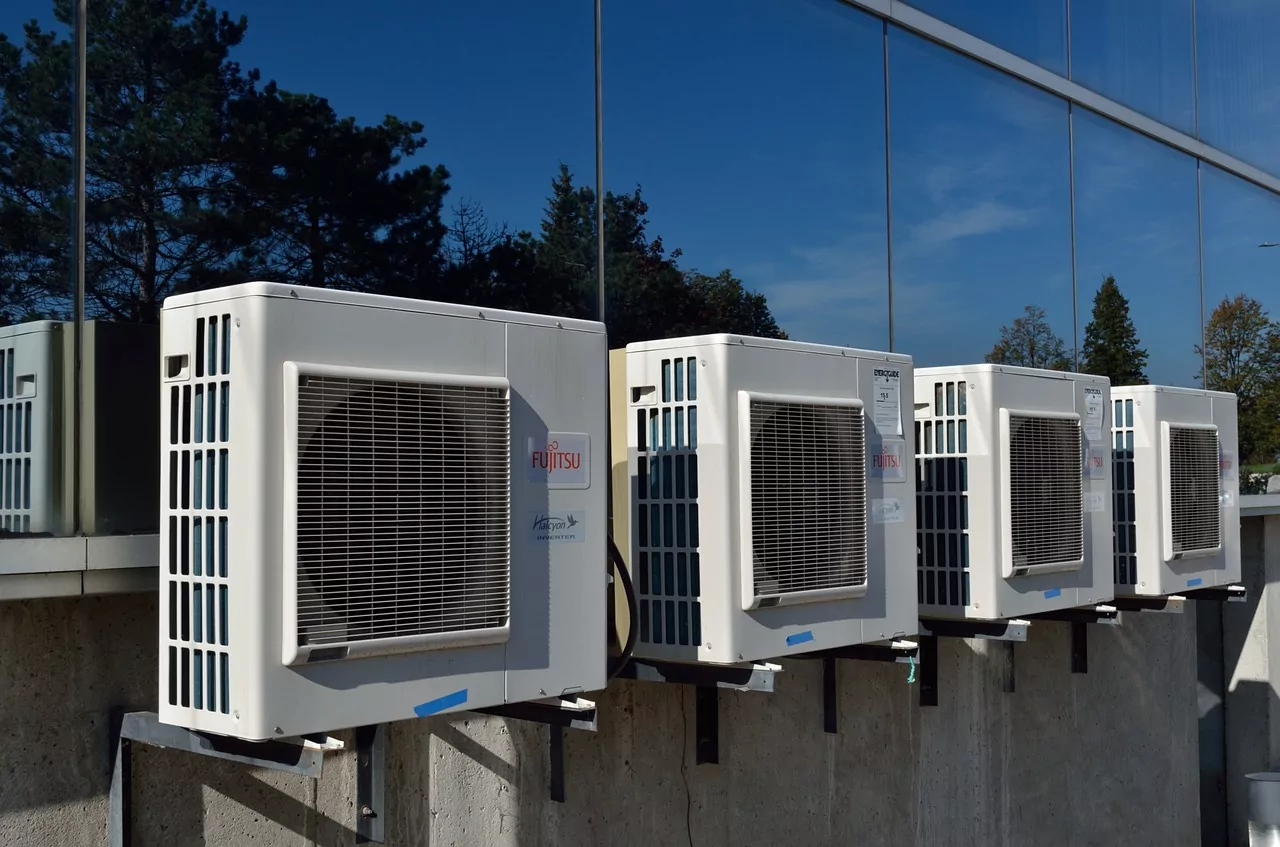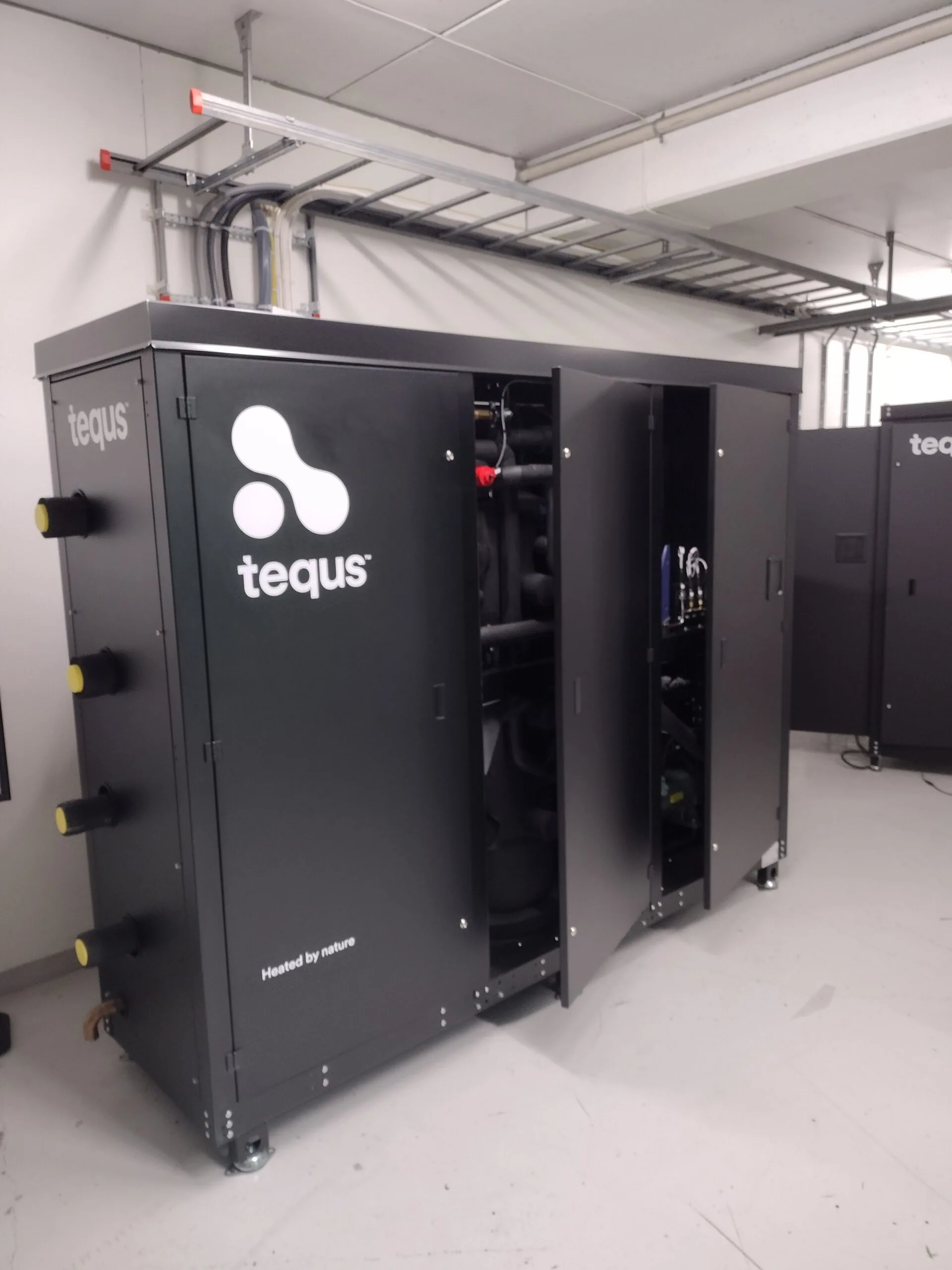
Very High Efficiency HVAC Systems
You cannot discuss or make significant strides in energy efficiency for buildings without looking at HVAC. While lighting has come a long way, as have control, refrigeration and compressed air systems – all buildings have HVAC requirements and few are as efficient as they can be. In addition – I find that most sustainability led decisions have another reason for investment, and comfort is a huge driving force of capital improvements.
Years ago, our earliest buildings were heated with wood, then coal, then natural gas. Today, most commercial and municipal buildings have a packaged rooftop system, meaning that the heating and cooling both take place within one system on the rooftop. Some larger buildings have larger boiler and chiller systems, which run hot and cold water through pipes.
But almost all boilers and packaged rooftop units use natural gas, which even at 100% efficiency contribute to global warming.
How do we get better
We must make big changes if we are to make a significant difference in the environmental impact of our built environment, since heating and cooling make up the largest proportion of energy consumption for most building types.
There are two ways we can make improvements on HVAC for our buildings – we can make small improvements through technology advances, like adding smart thermostats or replacing current equipment with advanced rooftop equipment.
Alternatively, and I would argue more meaningfully, we can take big leaps and redesign systems. This includes electrifying buildings, using energy recovery ventilators, and Variable Refrigerant Flow (VRF) heat pump systems for a radical overhaul of existing systems. This is the approach we are taking right now with some of our progressive customers.

Heat Pump and VRF System - What is it?
A heat pump is similar to an air conditioner or refrigerator – it uses electricity to take heat from one space and drive it to another. Even on really cold days, there is heat in the outside air that these systems can pull in to warm a space. Modern systems can efficiently heat a space up to -10 degrees Fahrenheit, and they work even lower temperatures than that but with some loss in efficiency. Thousands of buildings in Chicagoland are heated and cooled by heat pumps, and these modern systems work in our cold climate, despite what people may think.
Heat pumps can be either air sourced, which is what we will be focused on today, or ground sourced – which is geothermal heating and cooling. While geothermal is amazing and worth exploring – air sourced is more practical for most buildings in our region.

What are the Different Kinds of Heat Pumps?
There are several different styles of heat pumps. A heat pump is a concept – a simple and elegant want to transfer heat from outside in (or vice versa with air conditioning).
The most common and popular heat pumps are a Variable Refrigerant Flow (VRF) system, which is a heat pump system that can simultaneously heat and cool a building by having multiple indoor units transfer heat from one room into another for advanced energy savings (think of one hot sunny room with a cold room on the other side of the building). A large outdoor unit quietly takes energy from the outside air and brings it inside via copper refrigeration lines.
I often think of these systems as more similar to a commercial refrigeration system than a traditional HVAC system – since there are not huge ducts carrying the warm or cool air to the spaces. Instead, insulated refrigeration lines run between each room and quietly bring temperature control to each space. It involves a different way of thinking about a building, and a commitment to improving the space.
But there are more than one way to transfer heat into a building. Packaged Rooftop units can come as heat pumps – and in cold climates – they can have a backup system in either natural gas or electric resistance to supplement very cold days. These are gaining popularity – and provide very compelling advantages in times that electricity is very expensive. These can also replace existing packaged rooftop units, which are very common.
Natural refrigerant heat pumps are also gaining in popularity, and are incredibly common around the world. In fact, one of the worlds leading innovators in this space is an unexpected place – one of the coldest countries in Norway. Tequs, a manufacturer of CO2 heat pumps, can used a very common refrigerant to get water very hot. They make a good replacement for boilers, as well as a simultaneous heating and cooling.

How Do We Save Energy on Ventilation?
Energy Recovery Ventilators are one of the most cutting edge advancements in HVAC right now. First of all, we all understand the value of outside air to buildings right now in terms of Covid and our health. Fresh air means less chance of germs spreading from one person to another.
However, fresh air on very hot or very cold days also means higher energy bills. Your system worked hard to condition a space, and adding fresh air from the outside makes it work harder to warm or cool that incoming air. Local code requires fresh air be brought into spaces, although not all spaces have this if they are old, and even fewer have their systems working properly. I have seen many times outside air dampers permanently shut or even having cardboard over them to help a system keep up on very hot or cold days.
Understandably, bringing in outside air and energy efficiency are naturally a bit at odds with each other.
ERVs layer the incoming air over the outgoing air to reclaim the heat. Heat moves across the temperature gradient. In the winter, heat is transferred to incoming outside air. And in the summer, heat from incoming air is transferred to the outside. Most of these systems have been 60-80% efficient, but new cellular technologies are up to 93% efficient in this process and can regulate moisture – keeping it out in summer and in during winter. I would estimate that less than 5% of buildings truly have good outside air flow in Chicagoland. This technology brings indoor air quality to the next level, bringing the presence of enough outside air and sustainability in alignment with each other.
This is not a new technology, so the energy savings have been demonstrated in other buildings and pilot programs. In fact, between 2015 and 2018, a pilot study program in the pacific northwest demonstrated HVAC energy savings between 49 – 89%<. Imagine completely removing the gas bill for your building, while your electric bill stays the same – this is shown to be possible. Imagine those same results in thousands of commercial properties in Chicagoland; this would be a meaningful environmental impact.
Rebates from Utilities
Rebates and incentives are readily accessible for commercial and municipal buildings in Illinois, including LED lighting, smart building controls, and energy efficient HVAC systems. Most of these rebates are prescriptive, meaning there is a set rebate value for each item. However, new technologies do not have as much data to base this on so utility rebate systems must continue to research to better understand the savings. Utility companies need data to help build a foundation for rebates and incentives in the future
Helping Chicago Businesses Increase Energy Efficiency
Verde has helped small and large businesses across Chicagoland become more energy efficient through smart upgrades to lighting, HVAC units and more. From the private sector to the public sector, we have helped a variety of businesses including restaurants, fire stations, nonprofits and more become more energy efficient while saving money on energy bills.
Make Your HVAC System Energy Efficient - Work with Verde
With nearly a decade of experience, Verde has helped hundreds of clients improve the efficiency of their HVAC systems. Call us for a free assessment and let us help you identify energy upgrades and savings. Once you have all the facts in your hands, we can help you get the work done. Whether you decide to make a few changes or opt for a complete upgrade, you can have peace of mind knowing that with Verde’s end-to-end service every aspect of the project is covered.
How it all works

Call in the pros.
Give us a call, and we’ll come take a look around – no fees, no commitments. Within a week or so, we’ll give you a custom, detailed report of where you can decrease your energy costs and how much you can expect to save.
01

Let’s do this.
Our Energy Efficiency Professionals do the necessary swaps, tweaks, and in some cases, complete overhauls to bring your costs way down and your savings way up. We know how to save you money – and we know what it takes to make the most of all of those energy rebate programs. In fact, we guarantee that no one can find more rebates off your project than Verde.
02

We’ve got your back.
If a bulb burns out or an issue occurs, call us. We’ll make it right.
03

Rejoice.
The bean counters on your team will be jumping for joy from the unexpected savings and your team’s Earth lovers will be singing your praises in no time. That’s because Verde’s solutions are just as good for your bottom line as they are for the Earth.



